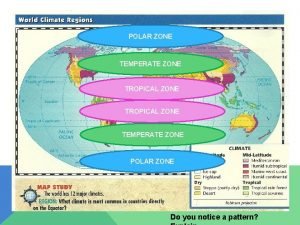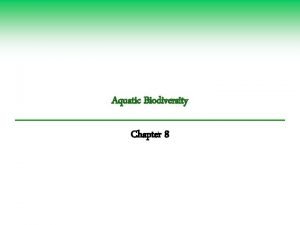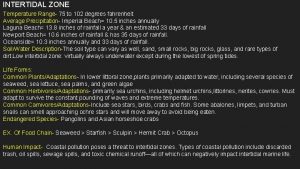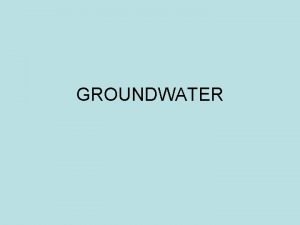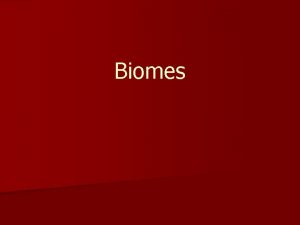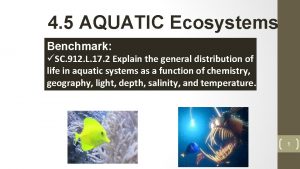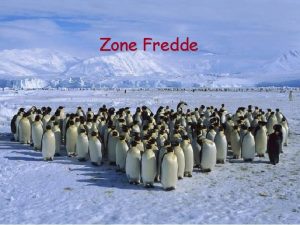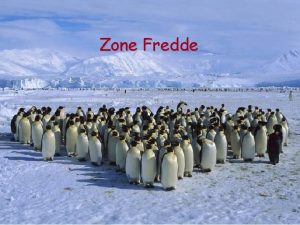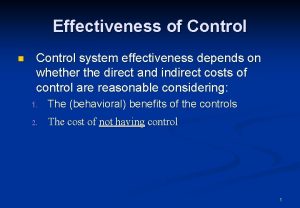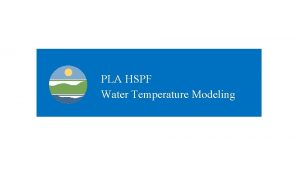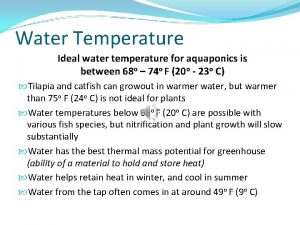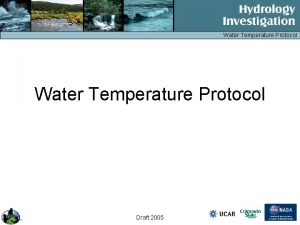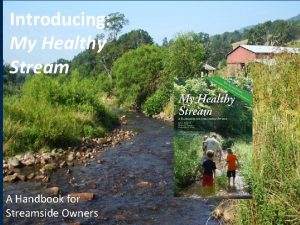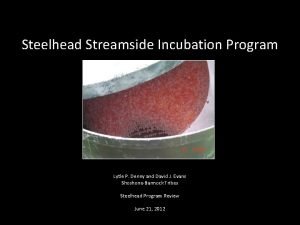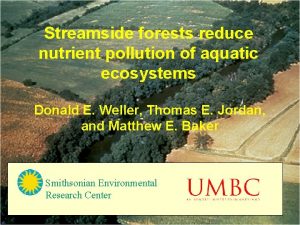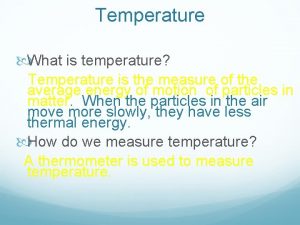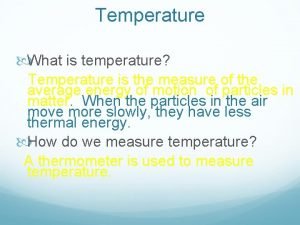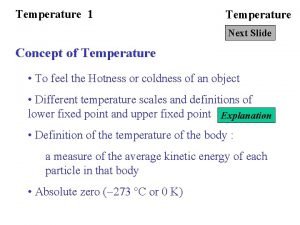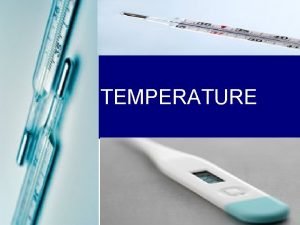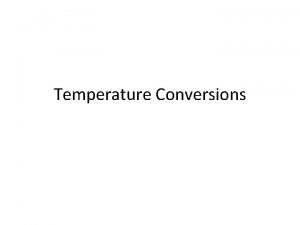Streamside Management Zone Effectiveness for Water Temperature Control



















- Slides: 19

Streamside Management Zone Effectiveness for Water Temperature Control in Western Montana Brian Sugden, Forest Hydrologist, Kalispell, MT Ron Steiner, Research Biologist, Coos Bay, OR Jay Jones, Lead Statistician, Seattle, WA Montana AWRA | West Yellowstone | Oct 19, 2018

Montana SMZ Law (1991) • 50 ft (~15 m) buffers along all stream channels. • Where streams flow more than six months per year and connect to downstream waters: 2 – Retain 50% of trees greater than 8 inch (~200 mm). – Leave trees representative of pre-harvest stand – Stocking level cannot drop below 88 trees per acre (~217 t/ha) – Measured from OHWM 9/11/2021

Native Fish Habitat Conservation Plan (2000) • Plum Creek (now Weyerhaeuser), entered into a 30 year agreement with US Fish and Wildlife Service to protect native fish in western Montana. – Bull trout (federally Threatened) – Cutthroat trout • Among many commitments, SMZ widths for fish streams under the Plan to be measured from the edge of any channel migration zone. 3 9/11/2021

Study Objectives • Evaluate effectiveness of 15 m operational SMZs on summer stream temperatures; • Evaluate factors that might explain response; • If there are increases in stream temperature, what is downstream persistence, and is there a fish response? 4 9/11/2021

Study Design and Methods • Perennial fish-bearing streams • Harvest along one or both sides of stream, at least 300 m in length. Foresters queried annually for qualifying sites. • 30 -minute data (+/- 0. 2 o. C) collected for at least one summer (July-Aug) before and after logging. Six metrics computed at each site for each year of data collection. • An array of instruments positioned along the channel bracketing harvest. • Other covariate data: Canopy cover, riparian stand condition, harvest distance, confinement, channel dimensions and slope • Biological response: fish 5

Methods 6 metrics evaluated for July-August period each year at each site: • Maximum Daily Maximum Temperature (MDM) • Maximum Weekly Maximum Temperature (MWMT) • Average Daily Maximum (ADM) • Average Daily Temperature (ADT) • Maximum Weekly Average Temperature (MWAT) • Average Diurnal Fluctuation (ADF) 6 9/11/2021

Statistical Methods • Data analyzed using a linear mixed-effects model. – Fixed effects: Year, data logger position, harvest state, position x harvest-state interaction. – Random effects: Study site, year-within-site to account for correlation among measurements made at the same site in the same year. – Fitted model used to estimate values for each response by logger position and harvest state. • All temperature response variables calculated from half-hourly data in R. 7 9/11/2021

Fish Data Collection Methods 8

Results – Geography and Study Locations 9 9/11/2021

Results – Half Hourly Data 10 9/11/2021

Results – Climate Trends 11 9/11/2021

Timber Harvest Reduction: -12. 5% Harvest + Blowdown: -14. 2% 12 9/11/2021

Results – Harvest Treatment Response Harvest effect estimate -0. 06 0 -0. 01 -0. 04 SE P-value 0. 27 0. 82 0. 26 0. 99 0. 21 0. 95 0. 16 0. 56 0. 14 0. 77 13 9/11/2021

Results – Site Level Mean Change (MWMT) 14 9/11/2021 -2 o. C -1 o. C 0 +1 o. C +2 o. C +3 o. C

Explaining Variability • None of our covariates were significantly correlated with observed temperature change at a site level. – – – – 15 9/11/2021 Change in basal area post-harvest; Change in canopy cover (riparian and over stream). Number sides harvested Confinement Class Harvest Length Channel Type / Gradient / Channel Width or Depth Elevation Flow Direction (Azimuth and general orientation N/S vs E/W)

Mc. Govern Creek – Harvest and Windthrow • Harvest removed 32% of original basal area (BA) within 15 m of stream. • Windthrow affected an additional 22% of the pre-harvest BA. 16

Mc. Govern Creek – Downstream Recovery 17 9/11/2021

Results: Fish Response (n=25) Estimate (SE) 0. 07 (0. 19) 0. 16 (0. 18) exp(Est) P-value 1. 09 0. 71 1. 17 0. 37 18 9/11/2021

Summary • Our results suggest that 50 foot (15 m) forest buffers with light removals, measured from the edge of channel migration zone (or OHWM), effectively protect summer stream temperatures. – Variation we saw not explained by our explanatory data. • No significant change in trout population or biomass in the summer following harvest. • One site had an estimated 3. 3 o. C increase in stream temperature due to harvest removal and post-harvest blowdown. – Most of increase had disappeared within 300 m downstream
 Countries in temperate zone
Countries in temperate zone Intertidal zone neritic zone and oceanic zone
Intertidal zone neritic zone and oceanic zone Source zone transition zone and floodplain zone
Source zone transition zone and floodplain zone Water and water and water water
Water and water and water water External forms of social control criminology
External forms of social control criminology Difference between curie temperature and neel temperature
Difference between curie temperature and neel temperature Difference between curie temperature and neel temperature
Difference between curie temperature and neel temperature Ferrimagnetism
Ferrimagnetism Abyssopelagic zone
Abyssopelagic zone Intertidal zone precipitation
Intertidal zone precipitation Temperature danger zone
Temperature danger zone Deep zone temperature
Deep zone temperature Stretched nostrils
Stretched nostrils Conducting zone of the respiratory system function
Conducting zone of the respiratory system function Grande et moyenne surface
Grande et moyenne surface Water table chart
Water table chart Underground water table
Underground water table Latitude in climate
Latitude in climate Photic zone and aphotic zone venn diagram
Photic zone and aphotic zone venn diagram Normal minute ventilation
Normal minute ventilation
